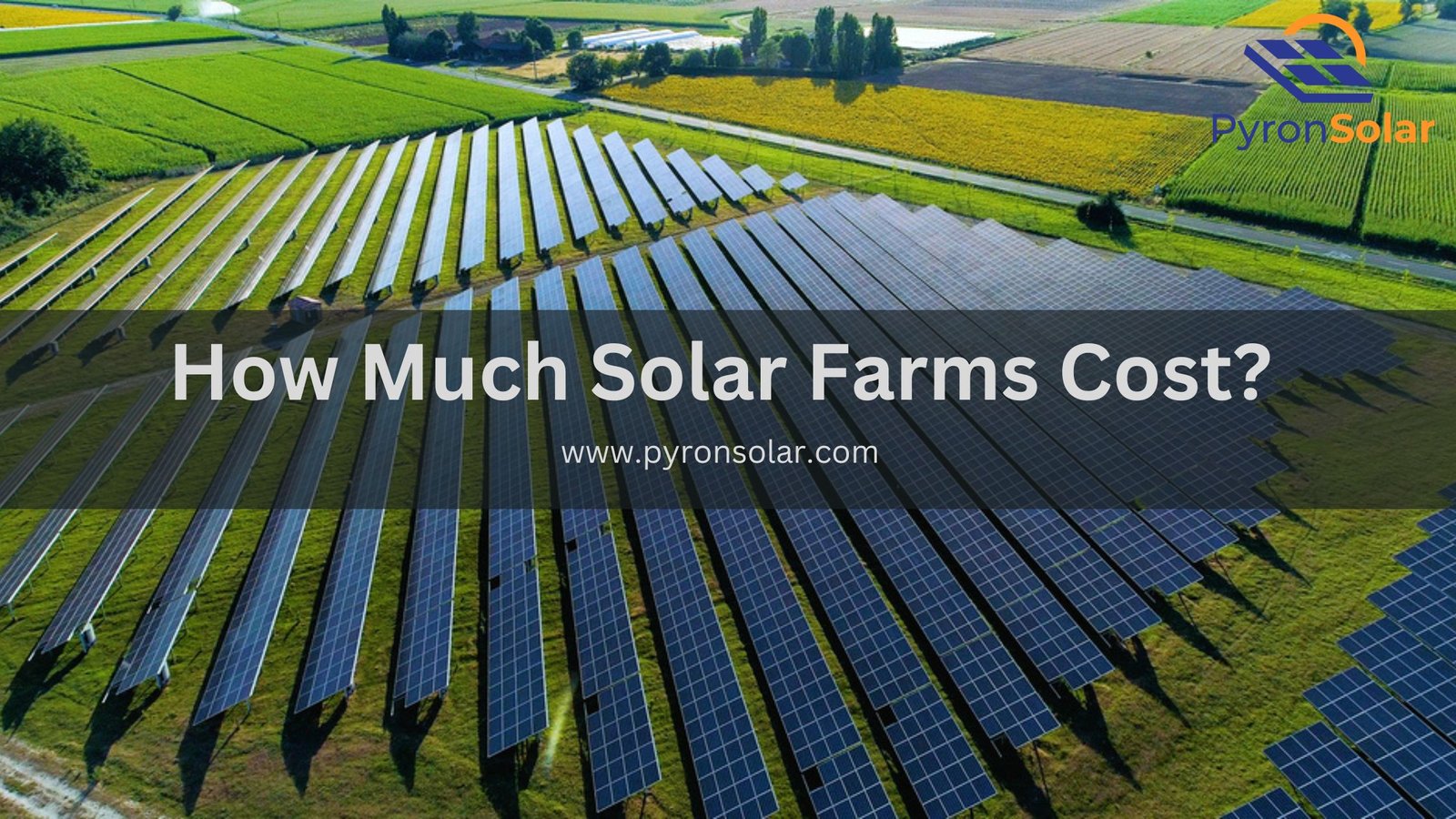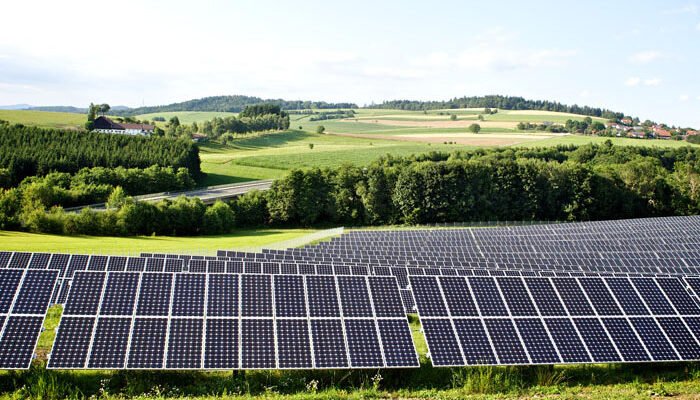The cost of solar farms depends on several factors. On average, utility-scale solar farms cost between $0.82 and $1.36 per watt. For a 1 megawatt (MW) solar farm, the total cost could range from $820,000 to $1.36 million. These costs include expenses related to land acquisition, equipment, installation, and labor.
Initial expenses for solar farms involve significant capital outlay for purchasing solar panels, inverters, and mounting systems. Additionally, costs for site preparation, including land grading and infrastructure development, can add to the overall expenditure. The choice of technology, such as fixed-tilt versus tracking systems, also impacts the total investment.
Operating and maintenance costs, though relatively lower than the initial setup costs, are essential to consider. Regular maintenance ensures the efficiency and longevity of the solar farm, including cleaning panels, repairing equipment, and monitoring performance.
Incentives and tax credits can significantly reduce the net cost of a solar farm. Programs like the Federal Investment Tax Credit (ITC) in the United States offer substantial savings, making solar farm investments more attractive and financially viable. Understanding these cost factors and potential savings can help investors and developers make informed decisions about solar farm projects.
To help you make a better decision, I have developed the guide below to help you understand the cost of installing a solar farm.
What is a Solar Farm?
A solar farm is a large-scale installation of solar panels designed to generate electricity for the power grid. These farms cover extensive areas of land and use photovoltaic (PV) technology to convert sunlight into electrical energy. Other names for solar farms include “solar parks,” “solar plants,” and “solar power stations.” Like fossil fuel power plants supplying consumers with electricity for the past century, they function as power plants. You can learn more about solar farms in detail.
How much Does a Solar Farm Cost?
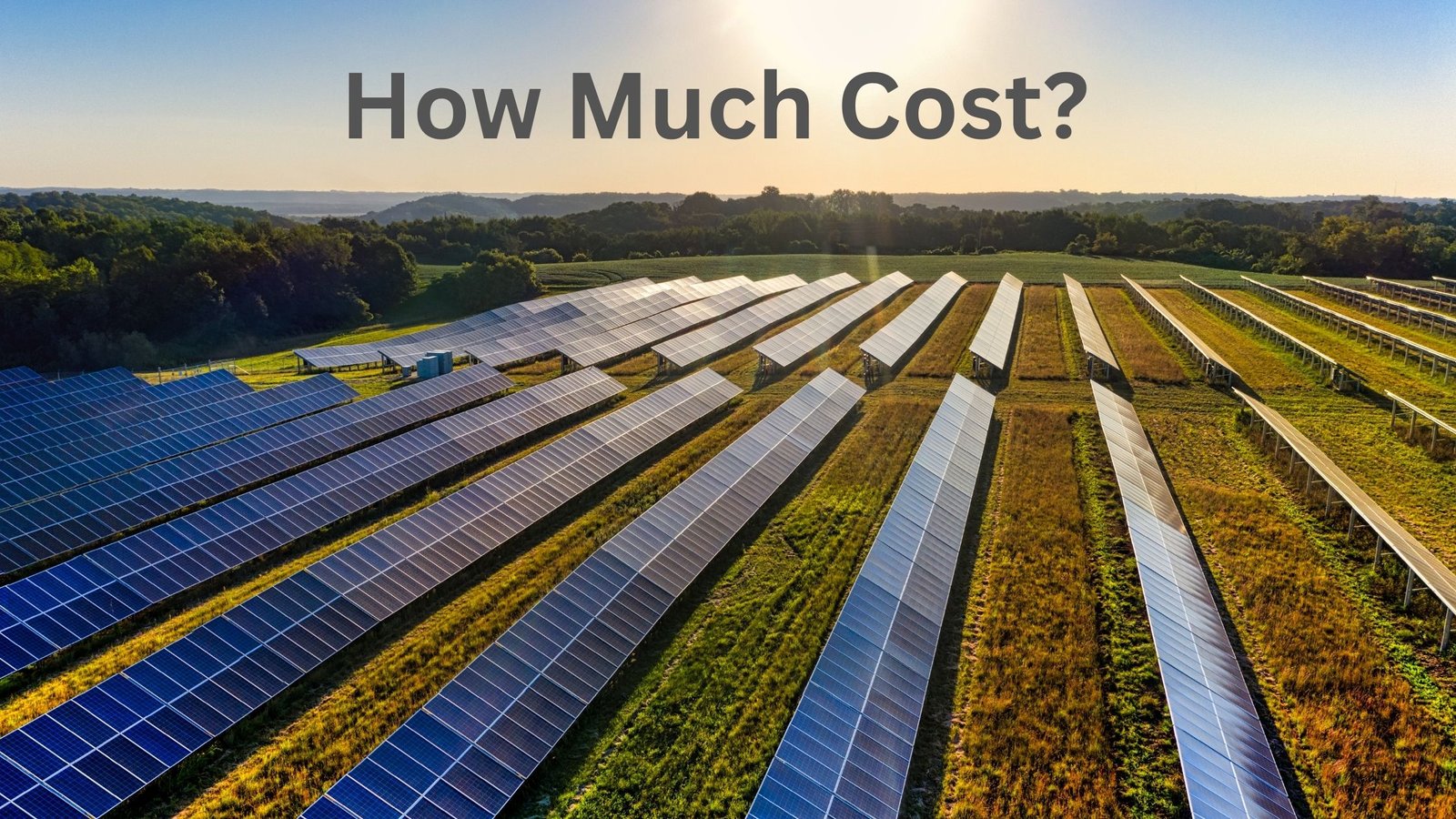
The cost of a solar farm varies significantly based on its size, location, and specific project requirements. On average, utility-scale solar farms cost between $820,000 to $1.36 million per megawatt (MW) to install. For example, a 10 MW solar farm would typically range from $8.2 million to $13.6 million. These costs includes land acquisition, equipment (such as solar panels and inverters), installation labor, permitting, and grid connection fees.
Community solar farms, which are smaller and serve local communities, have different cost structures. They generally range from $1.5 million to $2.5 million per megawatt. Commercial solar farms, designed to meet the energy needs of businesses, vary from $2.5 million to $3.5 million per megawatt. Factors affecting these costs include the type of technology used, land preparation needs, and ongoing maintenance expenses. Understanding these variables helps in accurately estimating the total investment required for a solar farm. Now, let’s see the cost of solar farms in detail according to the types of solar farms.
Types of Solar Farms
1. Community Solar Farms
Community solar farms are shared solar energy installations that provide power to multiple community members, businesses, or organizations. These farms enable individuals who cannot install solar panels on their properties (due to space constraints, shading, or financial limitations) to benefit from solar energy. Subscribers to a community solar farm typically receive credits on their utility bills for their share of the solar power produced.
Average Cost of Installation:
- Small scale (500 kW): $750,000 to $1.25 million.
- Medium scale (1 MW): $1.5 million to $2.5 million.
- Large scale (5 MW): $7.5 million to $12.5 million.
2. Commercial Solar Farms
Commercial solar farms are designed to provide power for businesses and industrial applications. They help businesses reduce their energy costs and carbon footprints by generating a significant portion of their electricity from solar power. Commercial solar farms are typically installed on the rooftops of commercial buildings or on large plots of land owned by businesses.
Average Cost of Installation:
- Small scale (100 kW): $250,000 to $350,000
- Medium scale (500 kW): $1.25 million to $1.75 million
- Large scale (1 MW): $2.5 million to $3.5 million
3. Utility-Scale Solar Farms
Utility-scale solar farms are large solar power plants designed to generate electricity for the power grid. These farms can cover hundreds to thousands of acres and produce significant amounts of power, often measured in megawatts (MW) or gigawatts (GW). Utility-scale solar farms are usually developed and operated by government and energy companies and are a key component of the transition to renewable energy sources. The electricity generated is sold to utilities, which then distribute it to consumers.
Average Cost of Installation:
- Small scale (1 MW): $820,000 to $1.36 million.
- Medium scale (10 MW): $8.2 million to $13.6 million.
- Large scale (50 MW): $41 million to $68 million.
These costs can vary based on factors such as location, land costs, labor, and specific project requirements.
Are Solar Farms a Good Investment?
A good investment is a solar power plant. An investment in a dependable grid-connected solar power plant has the potential to provide returns of over 18% annually that will be repaid in less than five years. Depending on your location, a dependable grid-connected solar power plant typically produces 4 to 5 units of electricity per day per kWp. Suppose you’ve purchased a high-quality solar plant and are correctly managing it.
By dividing (energy charges)/ by your electricity bill, you may get your utility tariff (number of units consumed in a month). To get the final per unit utility tariff to consider when calculating solar savings, I suggest adding taxes or duties paid to energy prices.
The solar policy of the utilities differs from state to state in India. Different regions have various rules, spanning from feed-in tariffs to net metering and gross metered. The solar policy determines the compensation the customer receives for the solar energy generated by the plant.
What is the Profit Margin For Solar Companies?
You’re earnings while running a leased solar panel business would be based on the number of panels you’ve implemented. An average return is around 6% per year, but you must have a long-term investment plan as the business owner.
Businesses that only install panels for clients who pay in full at once can expect to make $5,000 to $10,000 profit per job. But doing so needs a steady stream of new contracts. A year’s worth of labor with just a sizable industrial contract may net you a profit in the hundreds of thousands.
Solar Farm Return on Investment
Alternatives to fossil fuels and other non-renewable energy sources are provided by investing in renewable energy. Although this is a powerful motivator, it’s also crucial to consider the solar farm’s return on investment. A standard solar farm typically has 10% and 20% ROI.
Most solar farms enjoy at least 30 years of free electricity after paying off their system, which usually takes five to 10 years. These are merely approximate figures. When calculating the ROI of a solar farm, there are many additional elements to consider, such as the local climate, installation costs, system size, and technology.
Solar energy projects are a long-term investment that could yield a healthy return. Solar farms provide ongoing income for many years after the initial investment. The fact that energy produced is sold back to the power company so that it can be dispersed and utilized by others is one of the reasons a solar plant could be so profitable.
The Management of Solar Farms
It is pretty straightforward to explain how solar panels operate. Direct solar energy is used to generate electricity through solar electric panels. Semiconductors within the solar panels were turned on to create usable electricity whenever sunlight struck the panels.
A solar farm is a collection of several solar panels that work together to create electricity. Panels may be mounted on “single-axis tracking systems.” North-to-south running horizontal poles are equipped with solar panels. The panels move east to west during the day to reflect the sunlight.
How Long Will It Take to Build a Solar Farm?
Construction of a solar farm could be finished in a few months, based on the scale of the project and the number of people engaged in it. However, sitting and permitting are far more complex. Finishing all the required contracts and approvals for a solar farm can take three to five years.
Once built and operational, a solar farm requires little upkeep and must only be repaired three to four times yearly.
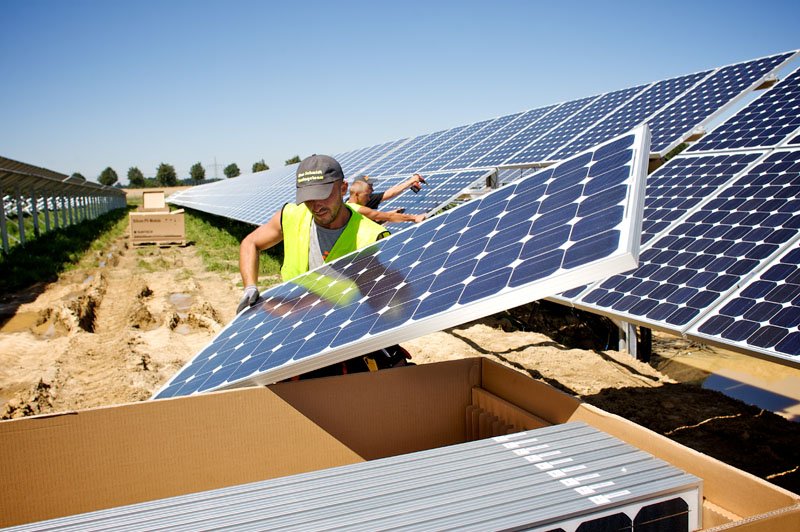
The World’s Largest Solar Farm
The Bhadla Solar Park in India’s Rajasthan desert is the largest solar farm in the world as of March 2022. The solar farm spans a sizable 14,000-acre area. It can produce 2.2 gigawatts, approximately 2,245 MW, of energy. It has over three times the capacity of Copper Mountain, the largest solar farm in the United States.
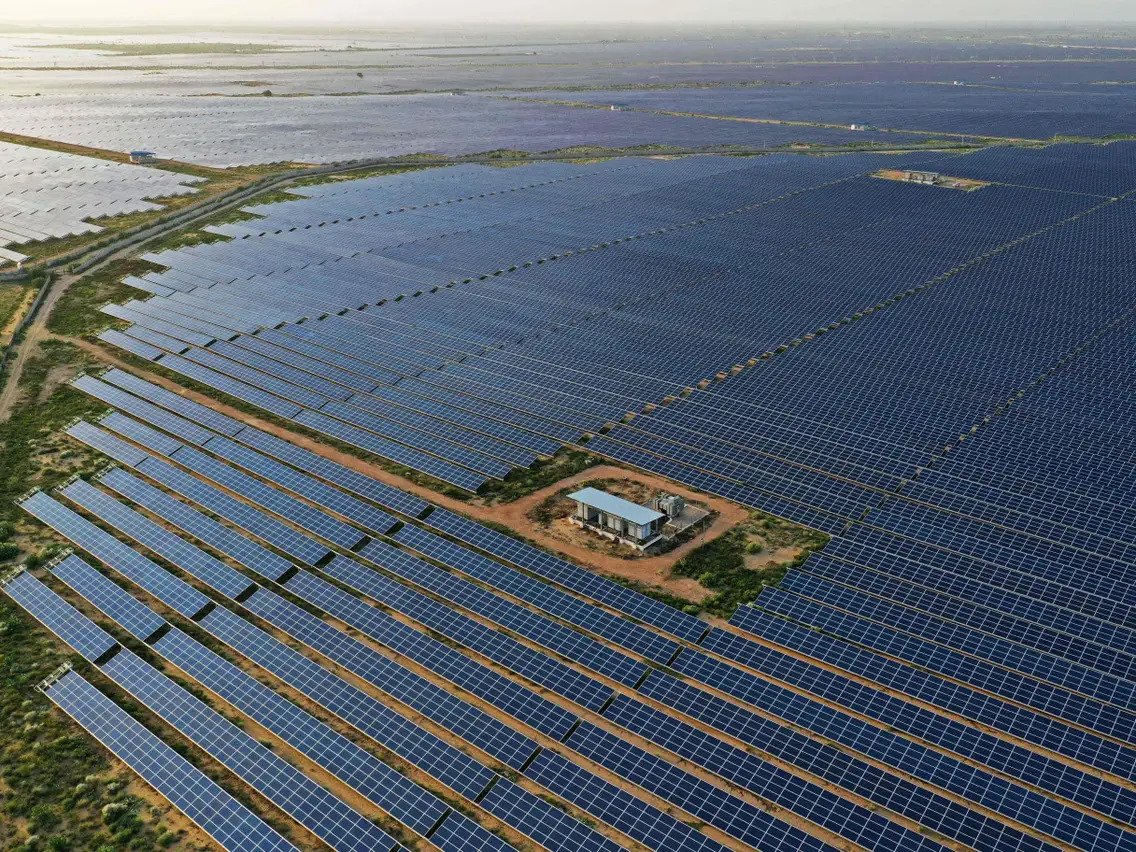
The Largest Solar Power Plant in the United States
The largest solar farm in the United States is the Copper Mountain Solar project in Eldorado Valley, Nevada. 816 MW is the total installed capacity.
It began as an 86 MW project in 2010 and has undergone four upgrades. The newest addition, a 250 MW unit that went online in March 2021, assisted Copper Mountain in surpassing the California-based Solar Star project as the large-scale solar facility within the country.
What Does the Future of Solar Farms Hold For Us?
In the future, residential solar systems, utility-scale solar projects, and solar community initiatives will contribute to the clean energy solution that will displace fossil fuel power globally.
As solar farm developers continue to find ways to decrease finance costs, as well as equipment costs, continue to decline, large-scale solar will only become more affordable. Shortly, more extensive and more solar farms should be expected to appear.
Frequently Asked Questions:-
- Are solar power plants effective?
One of the most well-known green and renewable energy sources, solar energy has the potential to be extremely important in addressing the surging need for falling electricity prices while upholding environmental safety. making it increasingly profitable and long-lasting.
- What size solar farm works best?
Typically, solar developers would need 200 acres of usable land or a minimum of 10 acres for a project of this size. A decent rule of thumb is that 100 square feet are needed for every kW of solar panels.
- Are solar power plants successful?
One of the most well-known green and renewable energy sources, solar energy has the potential to be extremely important in addressing the surging need for falling electricity prices while upholding environmental safety. making it exceptionally profitable and long-lasting.
- What benefits may a solar farm offer?
Solar farms offer a high rate of return. You can reduce your electricity bill, and upkeep is inexpensive. The few components solar panels have are housed inside sound-proof enclosures and have no mechanical parts. Solar farms hardly ever have a noise problem.
- How lasting are solar panels?
Solar panels are incredibly durable, and their lifespan has risen significantly during the past 20 years. Solar cells, also known as PV panels, are made to survive for more than 25 years. Many solar panels set as early as the 1980s still perform as expected.
- What is the profit margin for solar companies?
For First Solar (FSLR), current gross margin, operating margin, and net profit margin during the past ten years. The portion of revenue a business keeps as income after deducting costs is known as the profit margin. As of September 30, 2022, First Solar’s net profit margin was 3.75%.
- How much power does an acre of solar panels produce?
For each MW of output, solar power plants require at least 5 acres of land, so 25 acres are needed to produce 5 MW of energy.
Conclusion
Thus, I have included all the essential information regarding solar farms in this article. Starting with the fundamental definitions, I moved on to the various types of the same and their privileges. In the third session, I made you more aware of the technical aspects.
I discussed the operation of solar panels, by extension, solar farms, and making money with solar panels. The remaining sections dealt with advice people interested in starting solar farms should note. With this, my sole goal in writing this post is to make it simpler for the readers to understand and get clarity on what a solar farm is.
Ray is an avid reader and writer with over 25 years of experience serving various domestic and multinational private and public energy companies in the USA.

